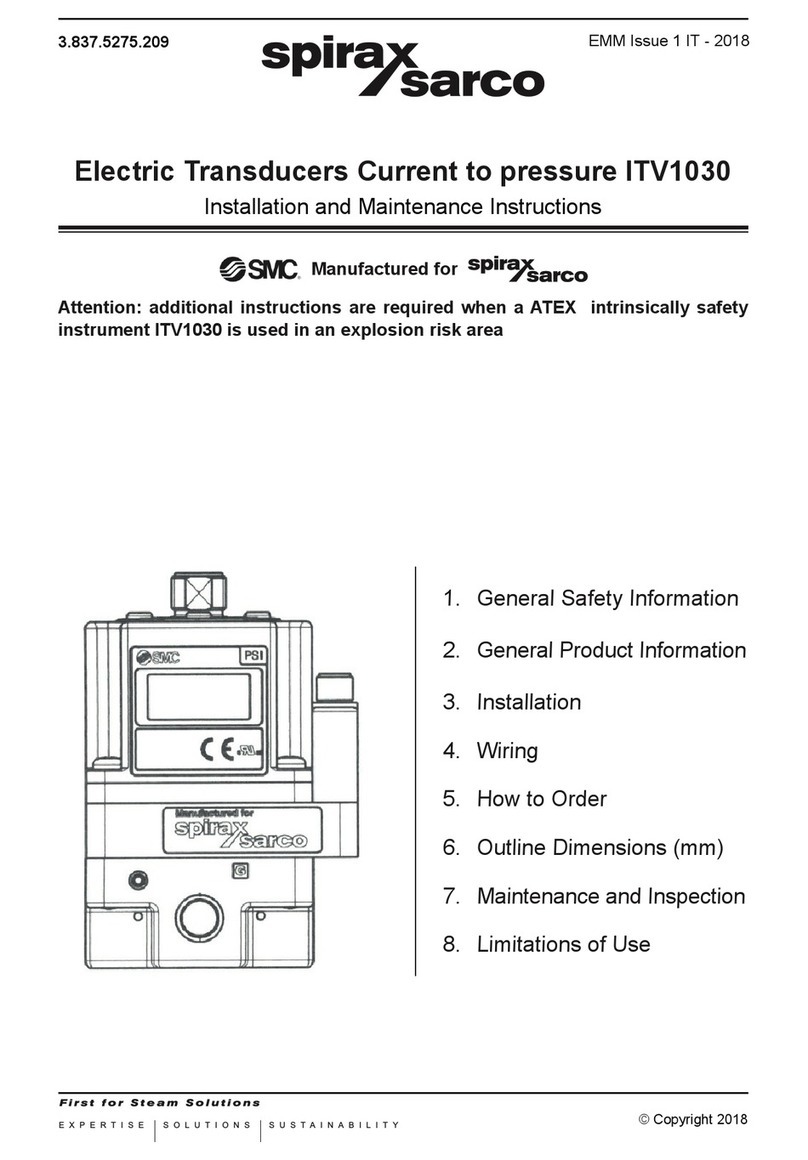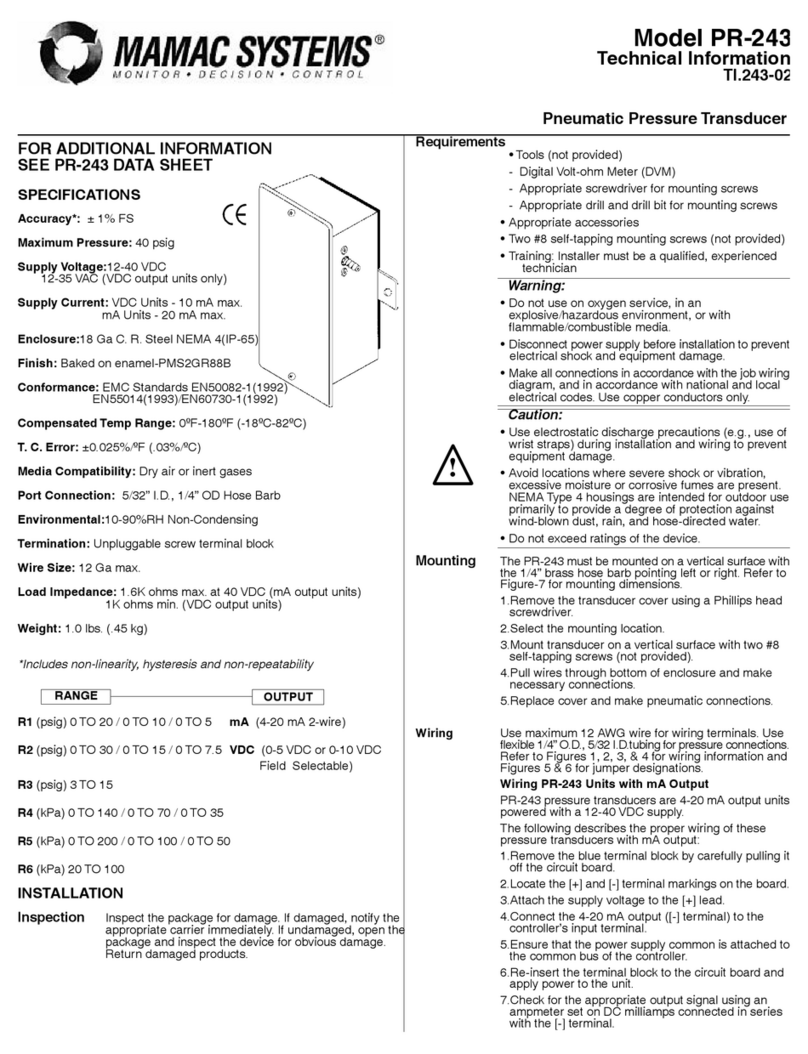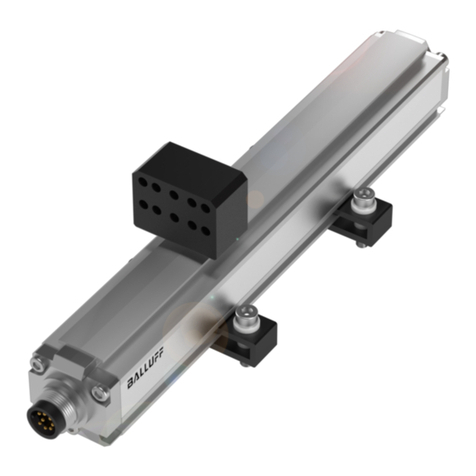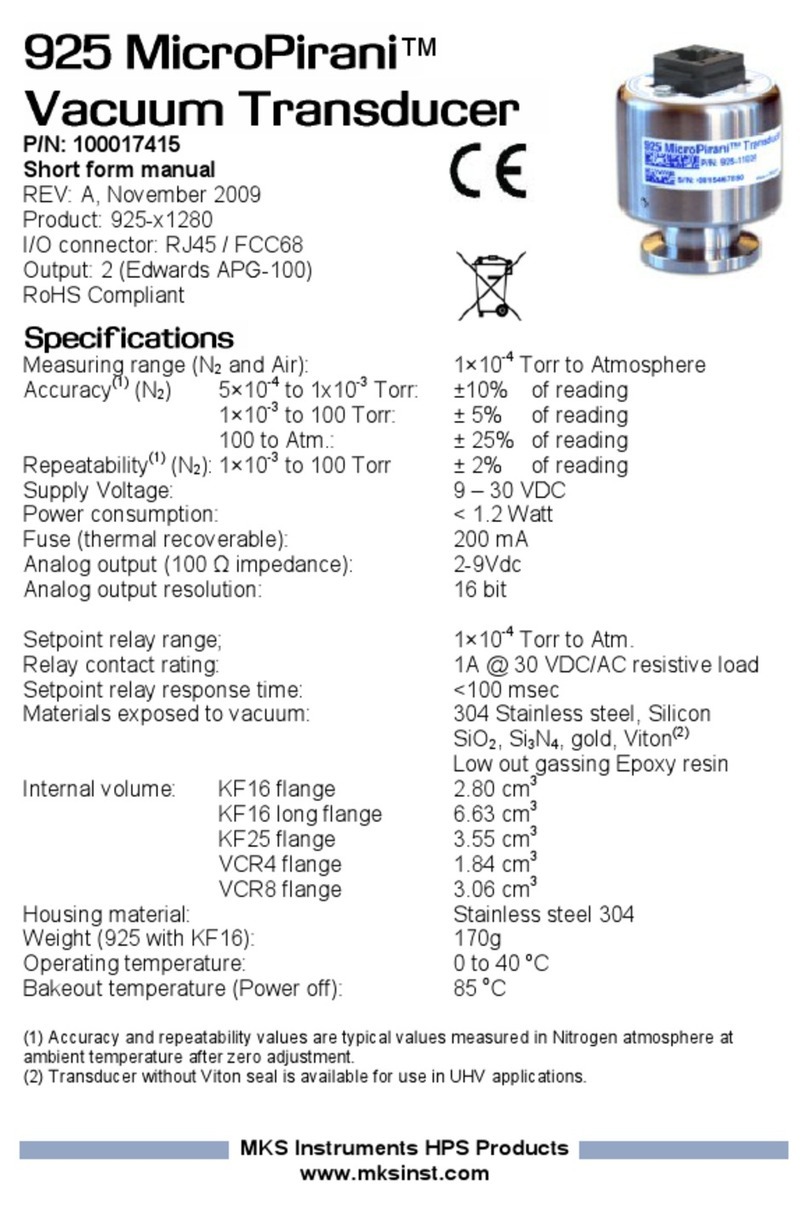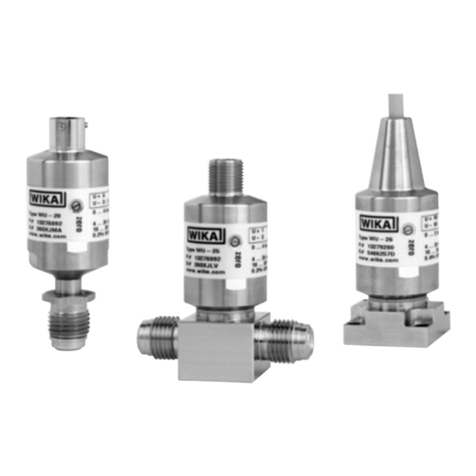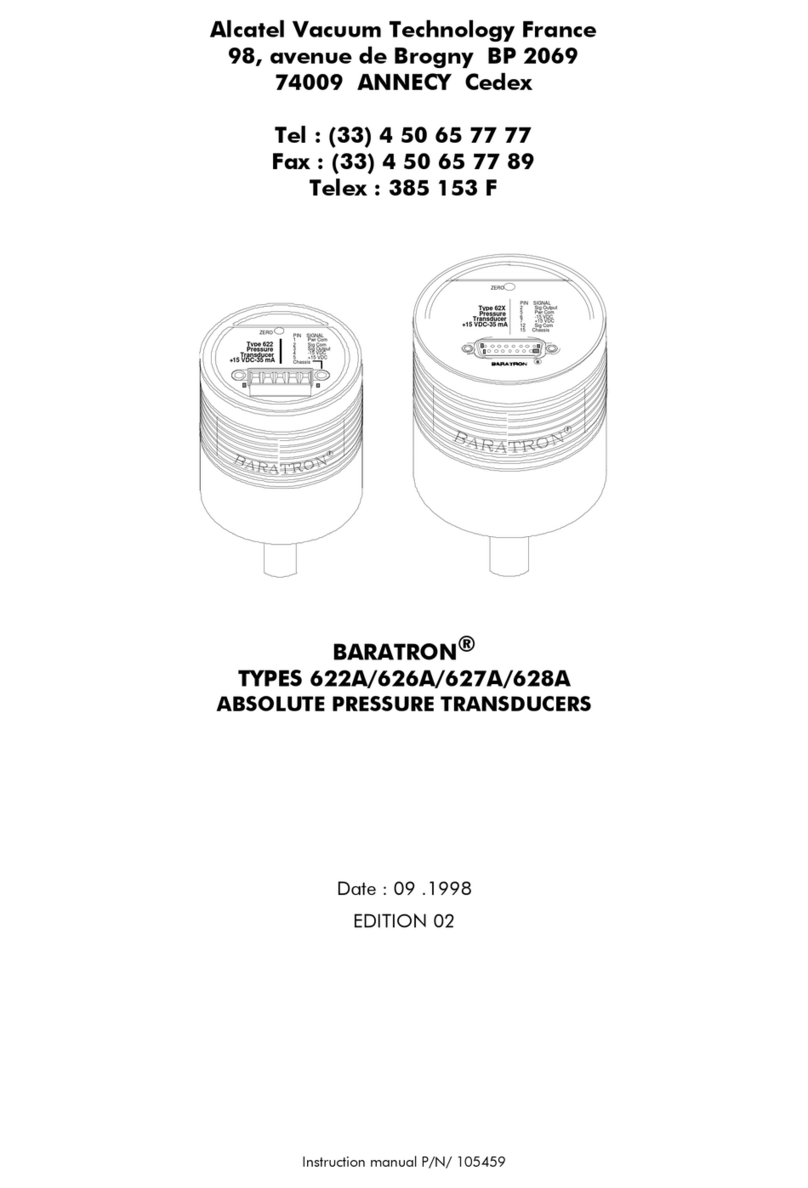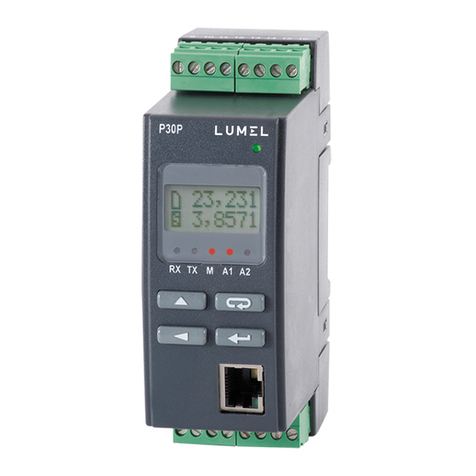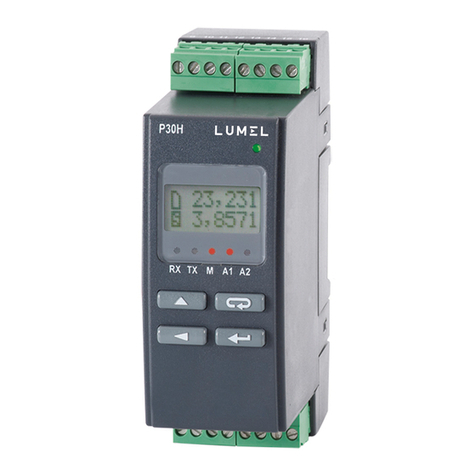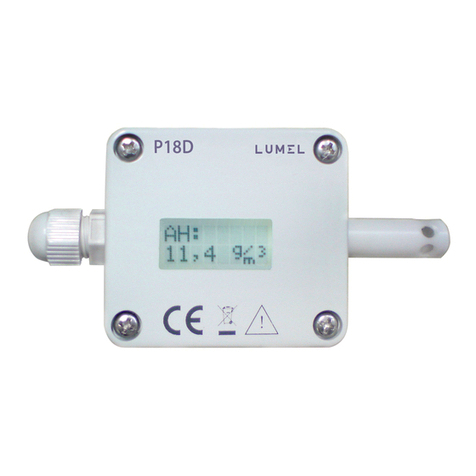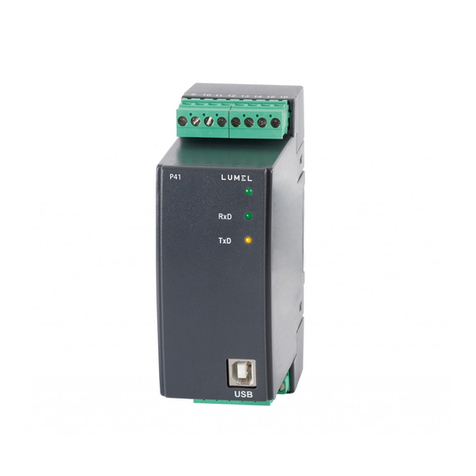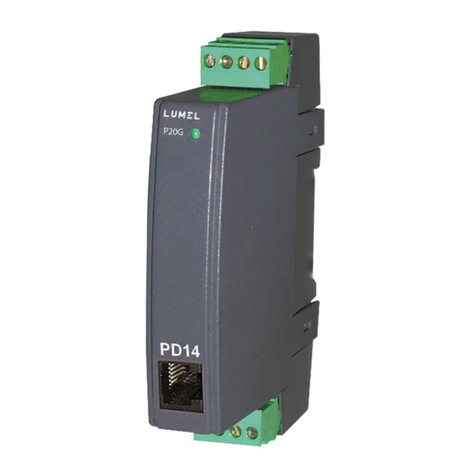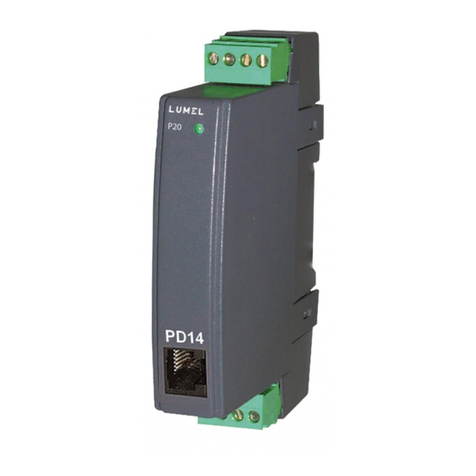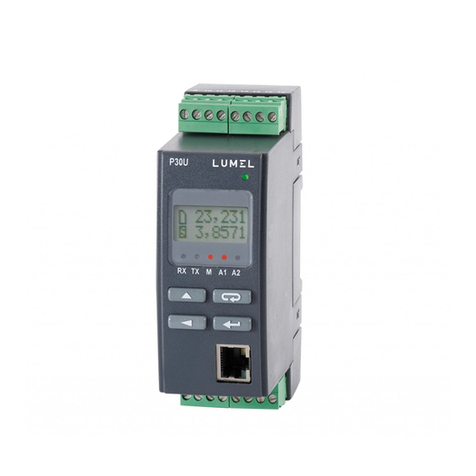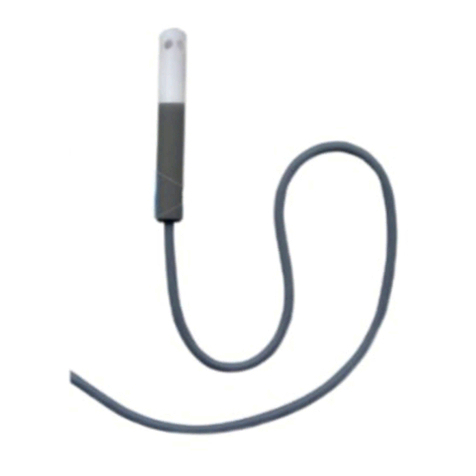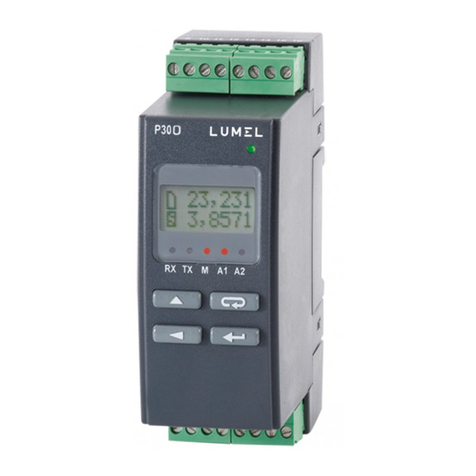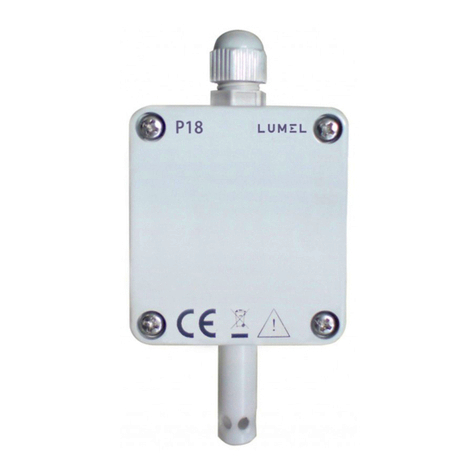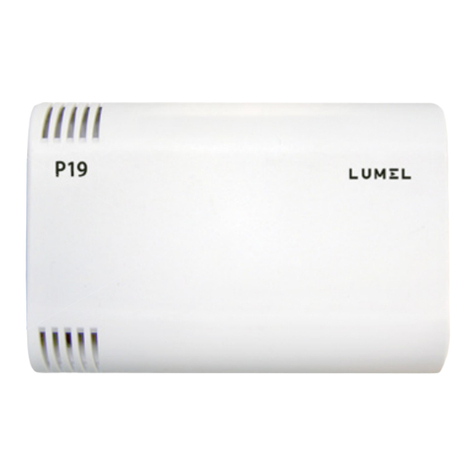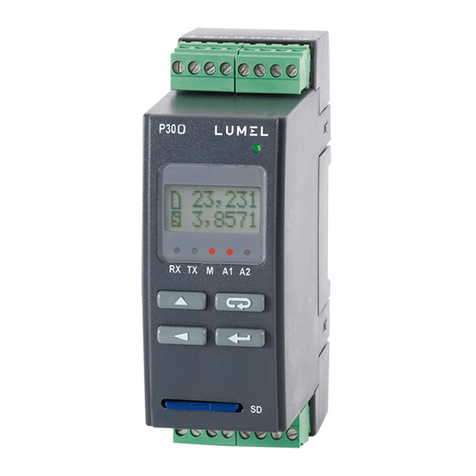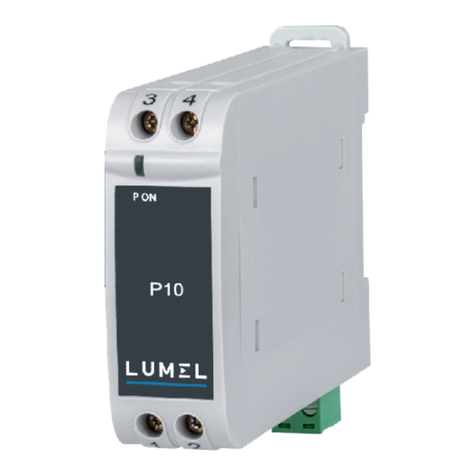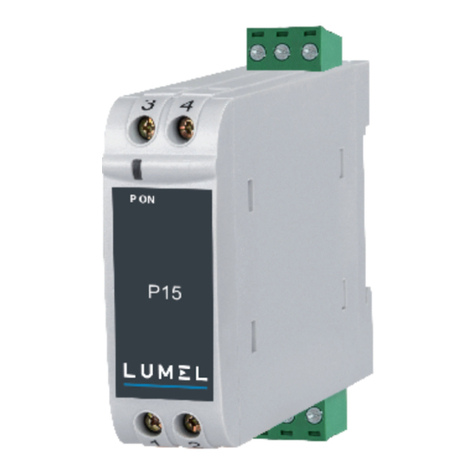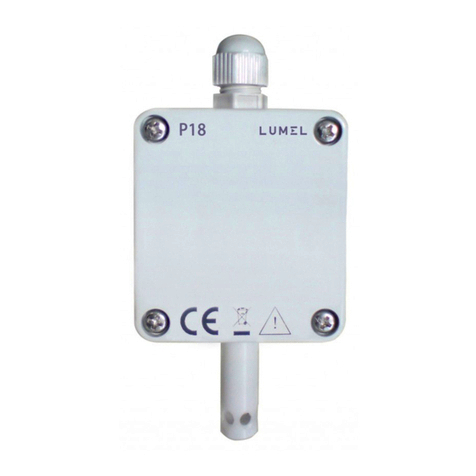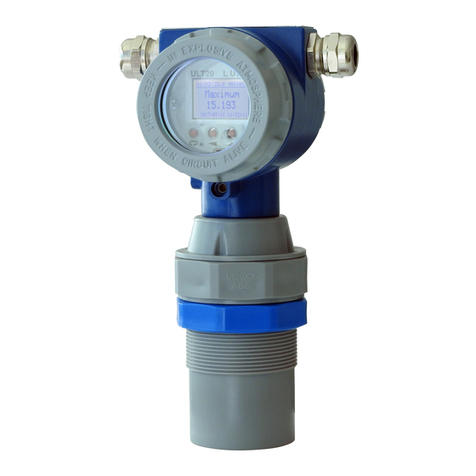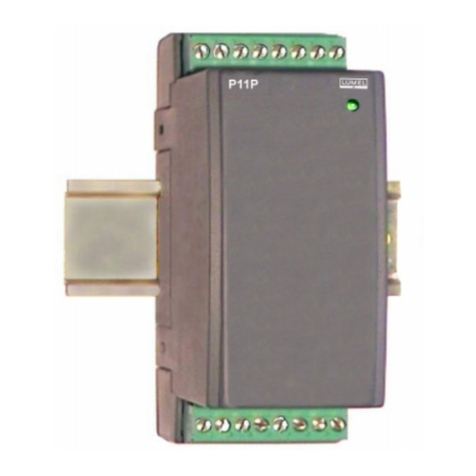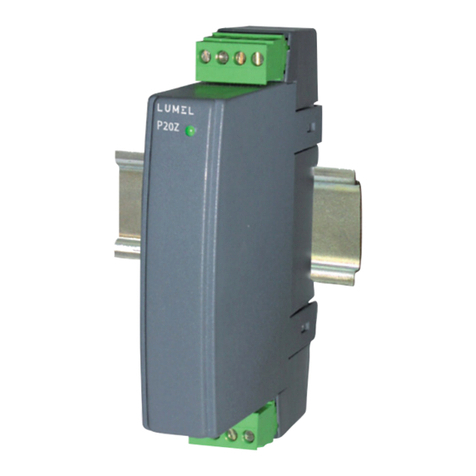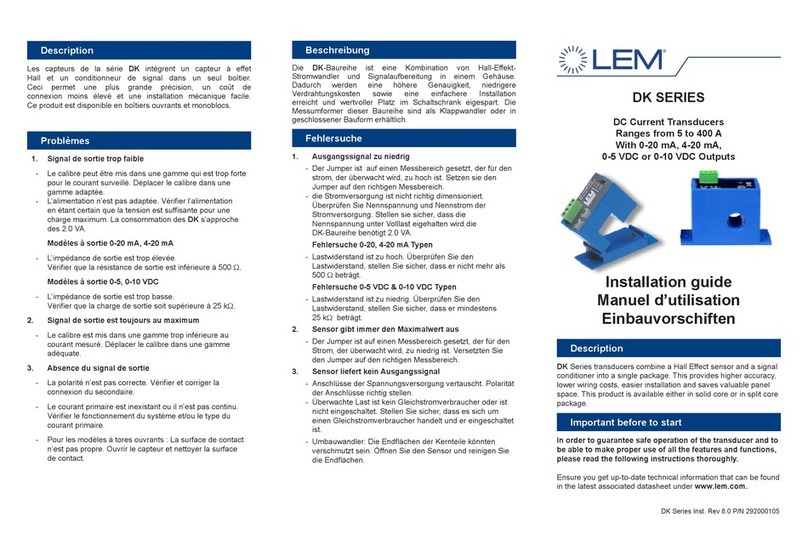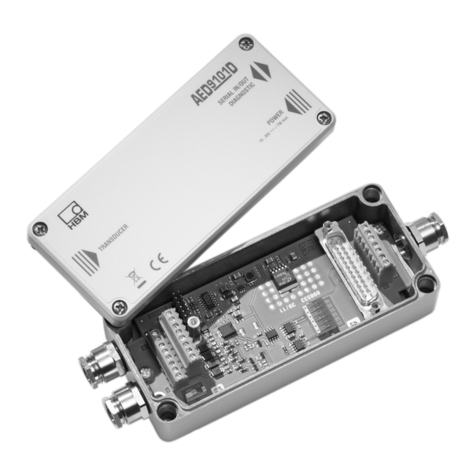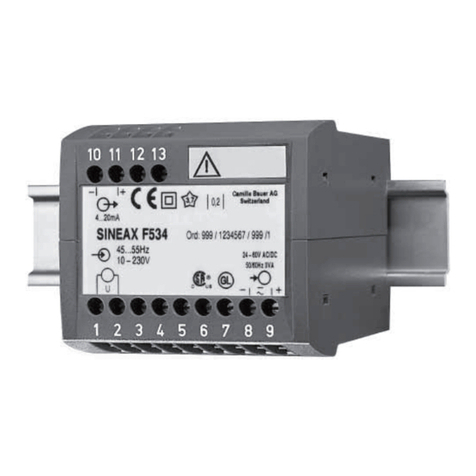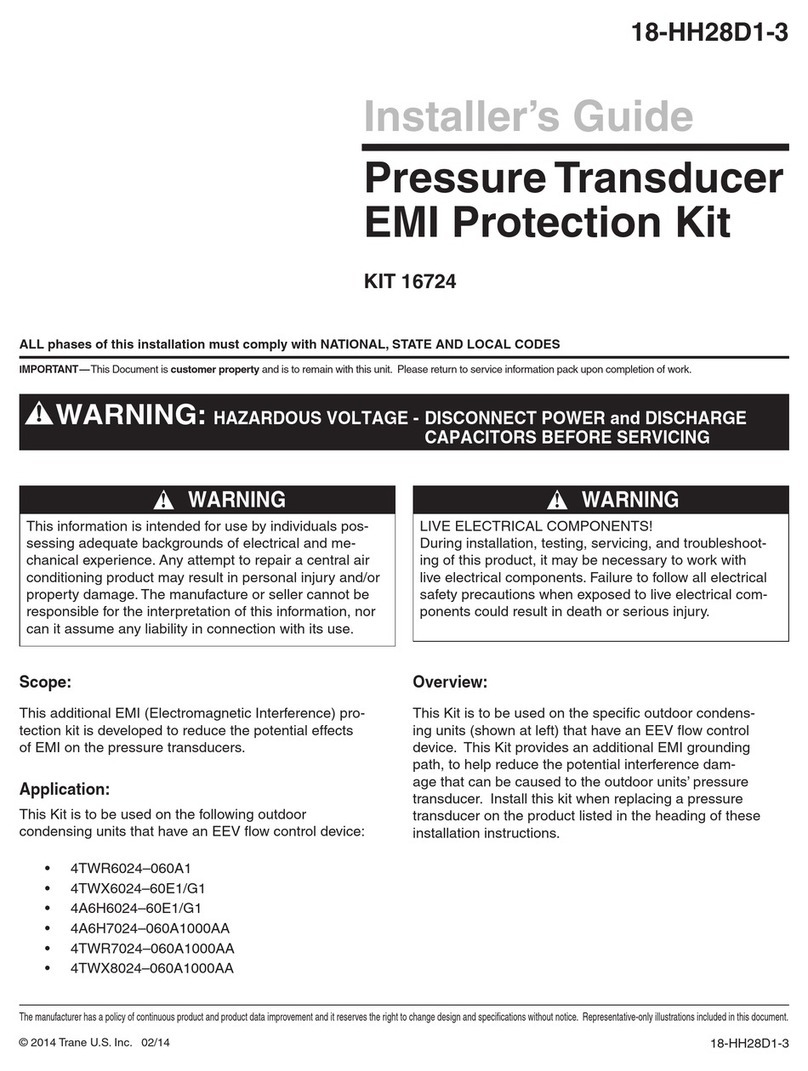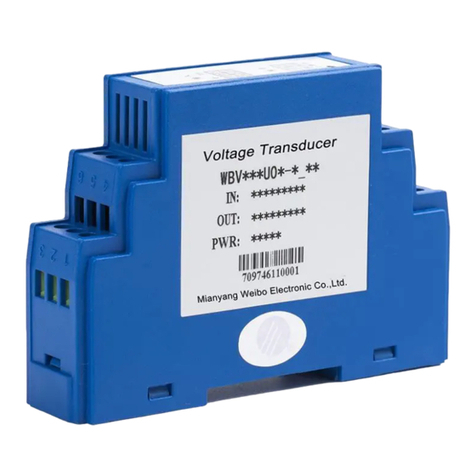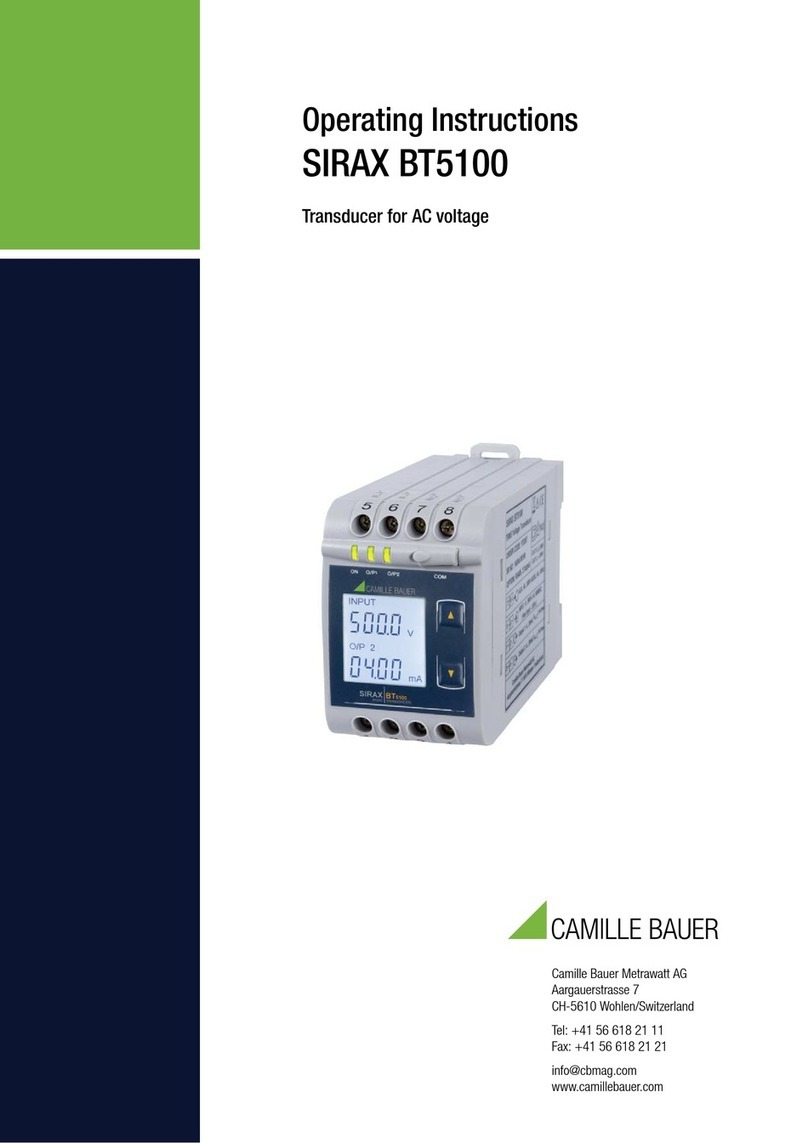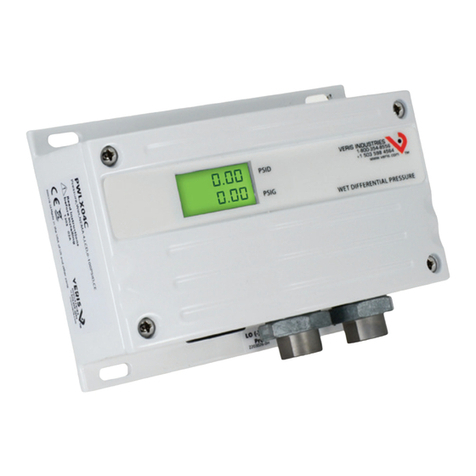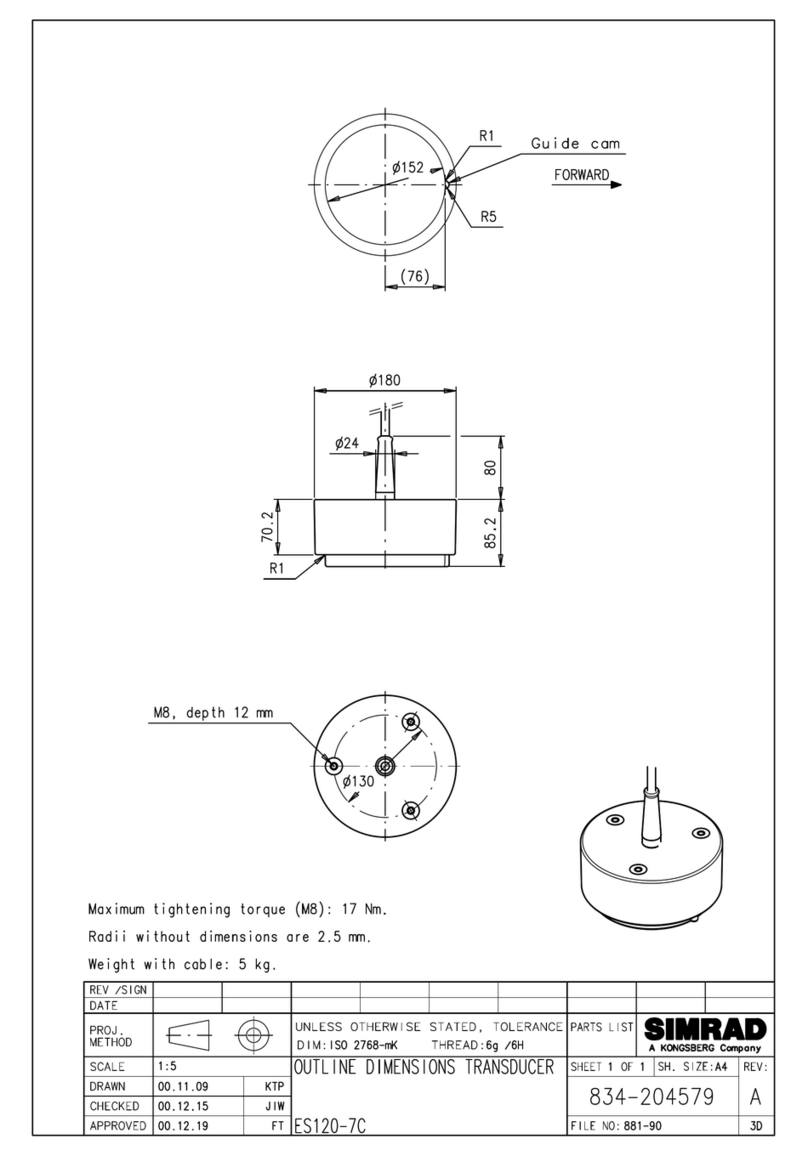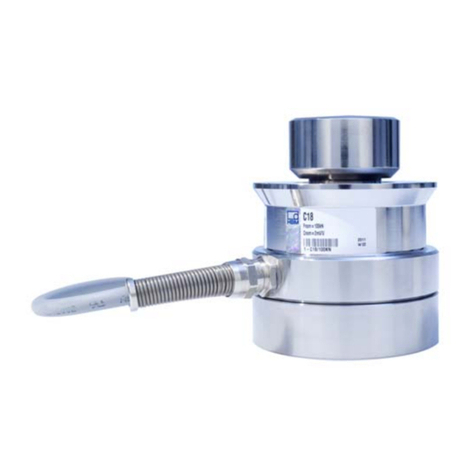
4
2.2. Schematy podłączeń zewnętrznych
Przetwornik ma dwa gniazda listew zaciskowych, do których dołączane
są dwa wtyki z zaciskami śrubowymi. Rys.2. na stronie 16 przedsta-
wia sposób podłączenia sygnałów zewnętrznych. Schemat podłączeń
znajduje się również na obudowie przetwornika.
W przypadku pracy przetwornika w otoczeniu dużych zakłóceń należy
zastosować na wejściu przetwornika przewody ekranowane.
3. OBS£UGA
Po włączeniu zasilania przetwornika, dioda stanu pracy powinna się
zaświecić na chwilę na czerwono, następnie na zielono.
Dioda stanu pracy przetwornika:
- dioda stanu świeci się na zielono – normalna
praca;
- dioda stanu świeci się na czerwono –
niewłaściwe parametry pracy; przetwornik
należy ponownie skonfigurować;
- dioda stanu pulsuje na czerwono – brak
kalibracji lub uszkodzona pamięć nieulotna;
przetwornik należy odesłać do producenta;
Rys 3. Widok przetwornika P20
Potwierdzenie komunikacji przetwornika z programatorem PD14 syg-
nalizowane jest przez krótkie wygaszenie diody stanu
P20
PL
Do konfiguracji przetwornika P20 jest przeznaczone oprogramowanie
eCon. Przetwornik należy połączyć z komputerem PC poprzez pro-
gramator PD14 i skonfigurować połączenie w panelu Komunikacja,
w zakładce Port szereg. (dla przetwornika P20 wybieramy adres 1
prędkość 9600 kb/s, tryb RTU 8N2 oraz odpowiedni port COM pod
którym został zainstalowany sterownik programatora PD14).
